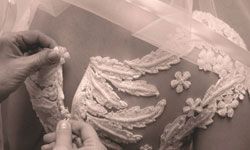Deciding to get married is the easy part. Planning the wedding and paying for it -- well, that's the overwhelming part. That's where your parents come in. But while planning involves many activities moms and daughters typically enjoy, it's not all fun and games. With tradition as your guide, you and your mother can navigate the wedding planning process to ensure every detail is handled to perfection.
What role will your mother play in this joyful/stressful time? And, how can you honor her at the ceremony in way that will make her feel particularly special?
Advertisement
